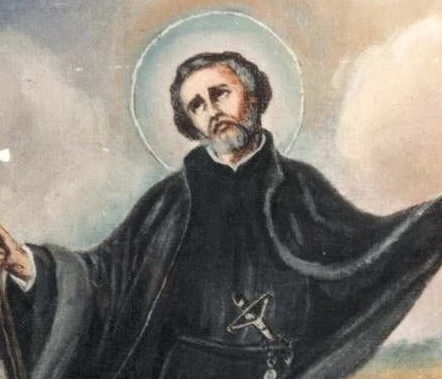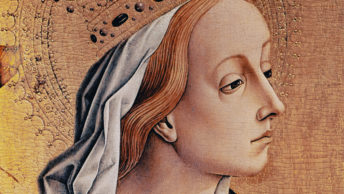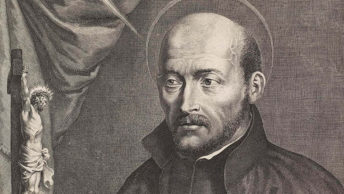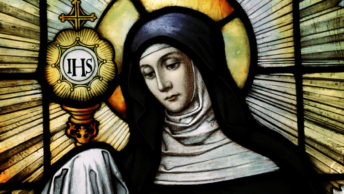Saint Andrew (Andrzej), a true hero for Christ, was born in 1591 to a noble family. The recent historical research indicates Strachocina, near Sanok, Poland as the most likely place of his birth. He attended a Jesuit school and then entered the novitiate in 1611. On March 12, 2022, we marked the 400th anniversary of Bobola`s priestly ordination. As a young priest he was sent to Vilno the town where he had studied. During an epidemic of plague, he worked day and night caring for the sick and dying but he is best known as a successful missionary to the Orthodox Christians which provoked considerable hostility from the Cossacks. This tireless apostle of Jesus Christ often nicknamed him “soul-hunter,” was not ashamed of being a Pole and Catholic. He lived by faith and defended the faith and did not hesitate to die for the faith of his fathers. On the fateful day, May 16 of 1657 the Cossacks attacked Janow and massacred both Catholics and Jews.
Only rarely, or perhaps never, acting deliberately, out of love for God, has man endured so much suffering. One might even say that this is a sort of sacrifice that the Lord delighted in. To preserve through his trials, Saint Andrew Bobola drew particularly strength from his intimate union with Christ and His Immaculate Mother to whom he was consecrated on December 8, 1608, the Eucharist and Adoration of the Most Holy Sacrament.
One account of Bobola`s death written in 1865 states:
“In the same year, the Cossacks surprised a holy Polish Jesuit, in the town of Pinsk, and conferred on him the palm of martyrdom, on the 16th of May 1657. Father Andrew Bobola … had just offered up the holy sacrifice, when a horde of Cossacks attacked the town. On beholding the barbarians, Father Bobola fell upon his knees, raised his eyes and his hands toward heaven, and, having a presentiment that his hour had arrived, exclaimed, “Lord, thy will be done!” At that moment, the Cossacks rushed upon him, stripped him of his holy habit, tied him to a tree, placed a crown upon his head, … after which they scourged him, tore out one of his eyes, burned his body with torches, and one of the ruffians traced, with his dagger, the form of a tonsure on the head of the venerable Father, and on his back the figure of a chasuble! To do this, the executioner had to strip off the skin of the holy martyr! But this was not yet all. The fingers of the apostle had received the priestly unction. The executioner tore from them the skin and forced needles under his nails! And during this indescribable torture, the hero prayed for his tormentors; he preached, both by word and example, until the schismatics tore out his tongue and crushed his head.” (History of the Society of Jesus From Its Foundations to the Present Time)
The parable found in Matthew (7:14) “How narrow the gate and constricted the road that leads to life” demonstrates the safest route which martyrs, virgins, and the righteous follow. It is a path that clearly needs to be pursued by everyone nowadays to attain salvation. In a long essay Benedict XVI pointed out the set of values which must never be cast away by man, even at the cost of one’s life, emphasizing that “Martyrdom is a basic category of Christian existence”; although it can take many different forms.
At the beginning of the 18th century nobody knew where he had been buried. In 1702 when the life of the Jesuit community and the monastery was in great danger, Fr. Marcin Godebski SJ, the rector of the Pińsk College, asked God for help. He experienced a vision of Bobola in which the martyr had promised to take care the College provided that the Rector would order a search for his body and when found, treat it with reverence, indicating that it lies among other bodies in a crypt under the church. Unfortunately, two days of extensive searching failed to identify his casket. Therefore, Bobola appeared a second time to a sacristan and showed the exact location of his burial. After opening the casket, those gathered there, found the body completely incorrupt: pliable and with soft flesh, still bearing traces of torture and blood, as if he had been interred the other day, and this was widely recognized as a proof of holiness. Surprisingly, the Swedish troops did not destroy the town and the epidemic which was raging in that part of Europe spared the region of Pińsk. Those events were commonly attributed to the intercession of Andrzej Bobola. No wonder his body quickly became the object of great veneration not only among local peasants but also noblemen.
Meanwhile, Poland`s size was progressively reduced by Russia, Prussia and Austria until, after the final partition in 1795, the state of Poland ceased to exist. Although the martyr was not yet proclaimed a saint nor a blessed, many Poles invoked the protection of Andrew Bobola. In Vilno, Fr. Alojzy Korzeniewski OP, in his preaching had often spoken about the issue of independence for which he was often persecuted by Russians. One day, when Fr. Alojzy after a long prayer closed the window of his cell, he saw a figure who introduced himself as Andrew Bobola, and ordered him to open it again and look out. Instead of a familiar cloister garth he saw a rolling plain, described by the monk as the lands of Pińsk region where he had received the grace of martyrdom for the Christian faith. Then he told him to look again… This time in the plain there were various armies engaged in a battle. Bobola explained “When the war, which you can see now, is finished, through the mercy of God, Poland will be reborn, and I will become her primary patron .” Today, it appears that the two of the three prophecies have come true, and one awaits its fulfillment.
The expansion of the cult of Andrzej Bobola seems most obviously to have been due to the beatification of 1853 and canonization of 1938, respectively. Nevertheless, what might be the underlying significance of his mission were the dramatic events of 1920. Poles realized that only a miracle could save the Country from total annihilation. As the hordes of the evil empire were at the gates of Warsaw, the capitol of Poland, thousands of people recited the novena and fell to their knees in supplication before the relics of Andrzej Bobola. Thus, it is still not uncommon for Polish devout Catholics to claim that the Miracle on the Vistula was caused largely by the intercession of Our Lady of Grace, Patroness of Warsaw, and St. Andrew Bobola. At that time, Polish Bishops sent a joint letter to Pope Benedict XV asking for his canonization and officially making him a divine patron of Poland.
In the writings of a 20th-century Polish-Ukrainian mystic, Stefania Fulla Horak (1909-1993), we find that St. Andrew Bobola showed himself to her on May 3, 1938. When she asked him “Will you become a patron of Poland?” He replied? “I am already a patron for the coming tough times. I will be helping you. When Poland is in danger I will appear to multitudes of people. […] People are not fervent enough and do not know how to pray to me. I can be particularly helpful in warding off threatening disasters. I can alleviate suffering. […] It will be a battle of good against evil, between the spirits of light and the spirits of darkness. Tell the people that terrible things will happen to them because they neglect the matters of the interior life. You can always ask me, and I will hear you.”
St. Andrew Bobola reportedly manifested himself to several parish priests of Strachocina in the second half of the 20th century. Always unexpectedly but at the same time at night, sometimes twice a week or once every few months, they witnessed a silent slender figure with a beard, dressed in a black overcoat, somehow resembling a priest. One of them allegedly was so scared that he ran away by climbing up a tree. Not surprisingly, some considered the presbytery haunted.
The most credible report of that strange phenomena provides Fr. Józef Niżnik, appointed a parish-priest in Strachocina in 1983, who vividly recalls “If one looks from the perspective of many years, especially from the first time that unknown figure appeared to me, one easily finds my conduct inappropriate. But fear was more powerful than reason. He came so irregularly that it was not possible to anticipate when the mysterious figure would knock on my door. […] However, it was only in 1987, awakened from sleep, I finally plucked up enough courage to ask two questions: Who are you? What do you want? I will never forget what he said then. “I am Saint Andrew Bobola. Start worshipping me in Strachocina.” It was the last time I saw that uncanny guest.”
In April 2002 the Congregation for Divine Worship and the Discipline of the Sacraments, acceding to the request of the Primate Józef Glemp, declared St. Andrzej Bobola the secondary patron of Poland.
Archbishop Józef Michalik confirmed the uniqueness of Strachocina by issuing a decree which permitted the construction of the Church and Sanctuary of St. Andrzej Bobola. The President of Poland, Andrzej Duda, has come to pray there four times.
Some might think that I am off my rocker, but there is no alternative – if the Ukraine war turns into World War III, an eventuality which cannot be ruled out, then reducing the catastrophic consequences of nuclear conflict can primarily be achieved by spiritual means. In other words, the more time the people of a particular country spend before the Blessed Sacrament, say the Rosary and practice the Five First Saturday’s Devotion, the less such a country will suffer.
At present I must say that I am fairly at ease about the future of Poland since, in 1608, Fr. Giulio Mancinelli, an Italian Jesuit, heard from the Virgin Mary “Why do you not call me Queen of the Polish? I greatly cherish this kingdom and I intend great things for it, as its sons burn with particular love for me.” Moreover, several prayer initiatives are currently being taken, recently launched by a charismatic priest, Fr. Dominik Chmielewski SDB, which attract thousands of people engaged in the public Rosary, night adoration and the way of the cross under the aegis of St. Andrew Bobola.
I hope and believe that my compatriots, spread throughout the four corners of the earth, join in storming heaven with the Rosary and a cry to St. Andrew Bobola for help to save the Old Country. However, the issue that is still causing me great concern is that, despite the Russian-Chinese sword of Damocles hanging over the World, still so many Australians are afraid of the effects of so called “climate change” or catching Covid-19 working upon our imaginations in ways that seem to outstrip its actual lethality, while so few care about eternal life. The true solution to the fragility and transience of human life can be found, not in Washington or Canberra, but at Calvary, where the Son of God suffered and died for sinners.
Saint Andrew Bobola, ora pro nobis!








